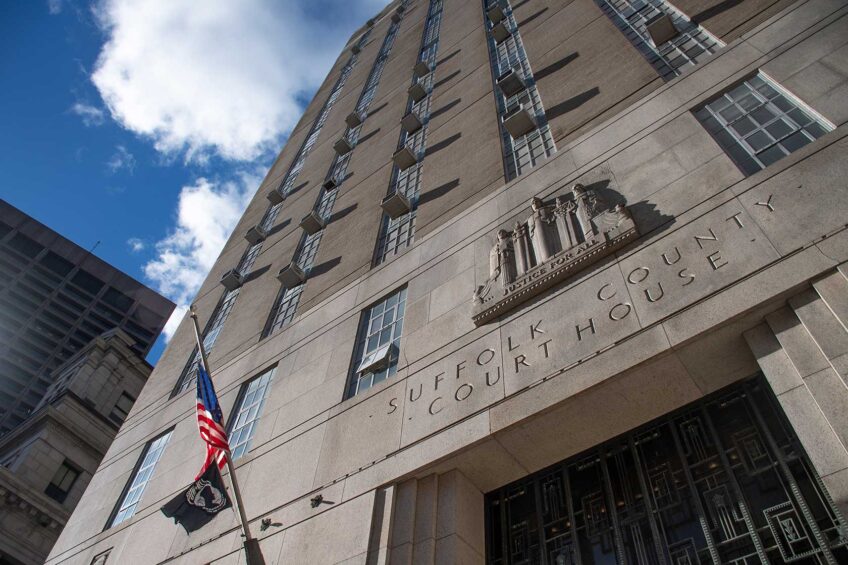As it was, four state senators represented sections of the black community. John Moakley served wards 8 and 9; Samuel Harmon had Wards 12 and 14; Robert Crawley had Ward 11 and Oliver Ames held Ward 4.
The arguments were persuasive; the only problem was the timing. The courts refused to grant an expedited hearing to force the state Legislature to use the NAACP’s plan in time for the 1970 elections. As a result, the state Senate remained all white.
But the point was made, and the State House got the message.
The Civil Rights Division of the U.S. Justice Department delivered more messages after receiving a complaint from Miller and other prominent community leaders. Maurice Donahue was the Senate president in 1970 and he said a new plan would be developed by the recently created Legislative Redistricting Committee.
The next year, Len Alkins, who would later become president of the Boston branch of the NAACP, was working his way up in the State House as a legislative assistant in the office of Senate President Kevin Harrington. There, he saw firsthand the politics of redistricting.
It was Harrington who enlisted the help of Everett state representative Keverian to help devise a third plan. It wasn’t perfect. But a fourth was done and finally approved.
The resulting district stretched from the South End through Roxbury and North Dorchester to Mattapan and included most of Boston’s black community. Born in August 1973, the Second Suffolk became the highest office in the state that a black candidate could theoretically win.
“They knew they needed to make the districts more uniform and give people of color the opportunity to win a Senate seat in the Legislature,” Alkins said. “It was definitely looked upon as a black senatorial seat, but it was also known that they couldn’t carve out a seat and then guarantee that seat to any racial or ethnic group.”
There were no guarantees, but most everyone strongly believed that the new seat was state Rep. Royal Bolling Sr.’s for the taking.
He and Harrington were collegial, and Bolling was the senior member of the newly formed Massachusetts Black Caucus that included the South End’s Mel King, Springfield’s Ray Jordan, Cambridge’s Saundra Graham and Roxbury’s Doris Bunte.
According to King and James Jennings in “From Access to Power: Black Politics in Boston,” redistricting was a major priority. In fact, they wrote, “the major accomplishment of the caucus in the first two years was legislating a black senatorial seat through redistricting.”
The unintended consequence of a well-intended plan was the bitter fight for the seat between Bill Owens and Bolling.
Owens won, but as Jennings and King wrote, “the conflict between Owens and Bolling not only split the community, but seriously weakened the caucus as well … The campaigns were not fought on the basis of the issues, but deteriorated into personal politics taking precedence over the needs of the community.”
Owens held the seat until 1982 when Bolling finally defeated him. Owens reclaimed the seat in 1988, but lost it in 1992 to Dianne Wilkerson. Sonia Chang-Díaz was elected this month to replace Wilkerson.
The Second Suffolk has survived over the years, and has kept its core despite several redistricting plans, lawsuits and political shenanigans. The most recent ended with then-Senate President Thomas Finneran pleading guilty to perjury.
But the most blatant occurred during the mid-1980s, when then-Senate President William Bulger tried to move Ward 9 to his district in Southie.
It was Bolling who was most vocal on that attempted move and boldly called Bulger’s thinking the result of “plantation mentality.”
“The Senate president is playing with black history,” Bolling told reporters at the time. “It’s as if he has adopted a plantation mentality that says: ‘I’ll take a little of this, a little of that, some yuppies, a few Hispanics, a handful of Asians and just enough blacks so they’ll never have any real say in my lovely new district.’”
Alkins said he still believes that blacks would have been better served by trying to establish voting strength throughout the city.
The assumption, Alkins explains, is that blacks would be able to forge coalitions with other minority groups and whites. But that was way before Deval Patrick, the state’s first black governor, was around — and certainly well before anyone could imagine the election of an African American president.
“Blacks had voting blocs in Roslindale, Jamaica Plain, Dorchester, Roxbury,” Alkins recalled. “But we gave it all up by bringing blacks into one district. It was almost a guarantee to white politicians that they didn’t have to listen to their black constituencies.”
But Alkins is quick to point out that blacks in the 1970s were caught between a rock and a hard place.
The Second Suffolk was better than nothing at all.






